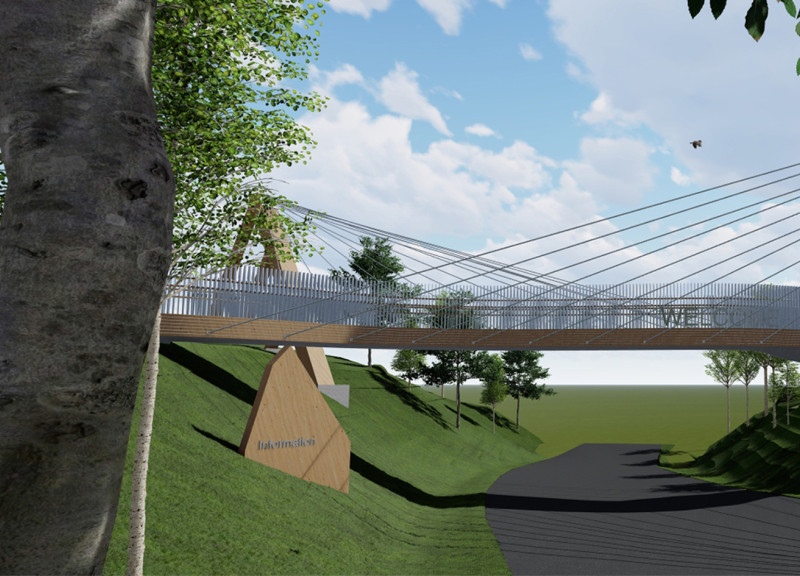5 key facts about this project
The Gauja Riverbridge acts as an important link to Gauja National Park in Latvia, enhancing the flow of movement while connecting visitors to the surrounding natural beauty. Designed for both vehicles and pedestrians, the bridge aligns with the original course of the Gauja River. This design emphasizes connectivity and an appreciation of the environment.
Design Intent
The bridge's layout accommodates various user needs. Vehicles, such as cars and mobile homes, can pass underneath, allowing for smooth transit while preserving the natural landscape. This thoughtful arrangement reflects a focus on both functionality and visual appeal, making the experience more enjoyable for everyone.
Environmental Considerations
Sustainability is a key aspect of the bridge's design. Careful attention has been paid to minimize carbon emissions in material selection and construction methods. Components include stainless steel elements and handrails made from acetylated wood, chosen for their strength and lower environmental impact. This approach aligns with the ecological goals of the national park, showing a commitment to environmental responsibility.
User Experience
The design encourages active interaction with the bridge. Signage is placed strategically to convey information to drivers without creating unnecessary distractions. This enhances the experience for users, allowing them to take in the beauty of the surrounding landscape as they travel. The bridge serves not just as a pathway but as a part of the park itself.
Structural Details
Details in the construction reflect a commitment to durability and function. Wooden cladding and supporting structures are integrated into the design, blending with the natural environment. Features such as elastomeric bearings and sealing levels ensure the bridge can withstand various weather conditions. Additionally, attachment points for steel ropes contribute to overall safety and strength, focusing on longevity and reliability in design.



























